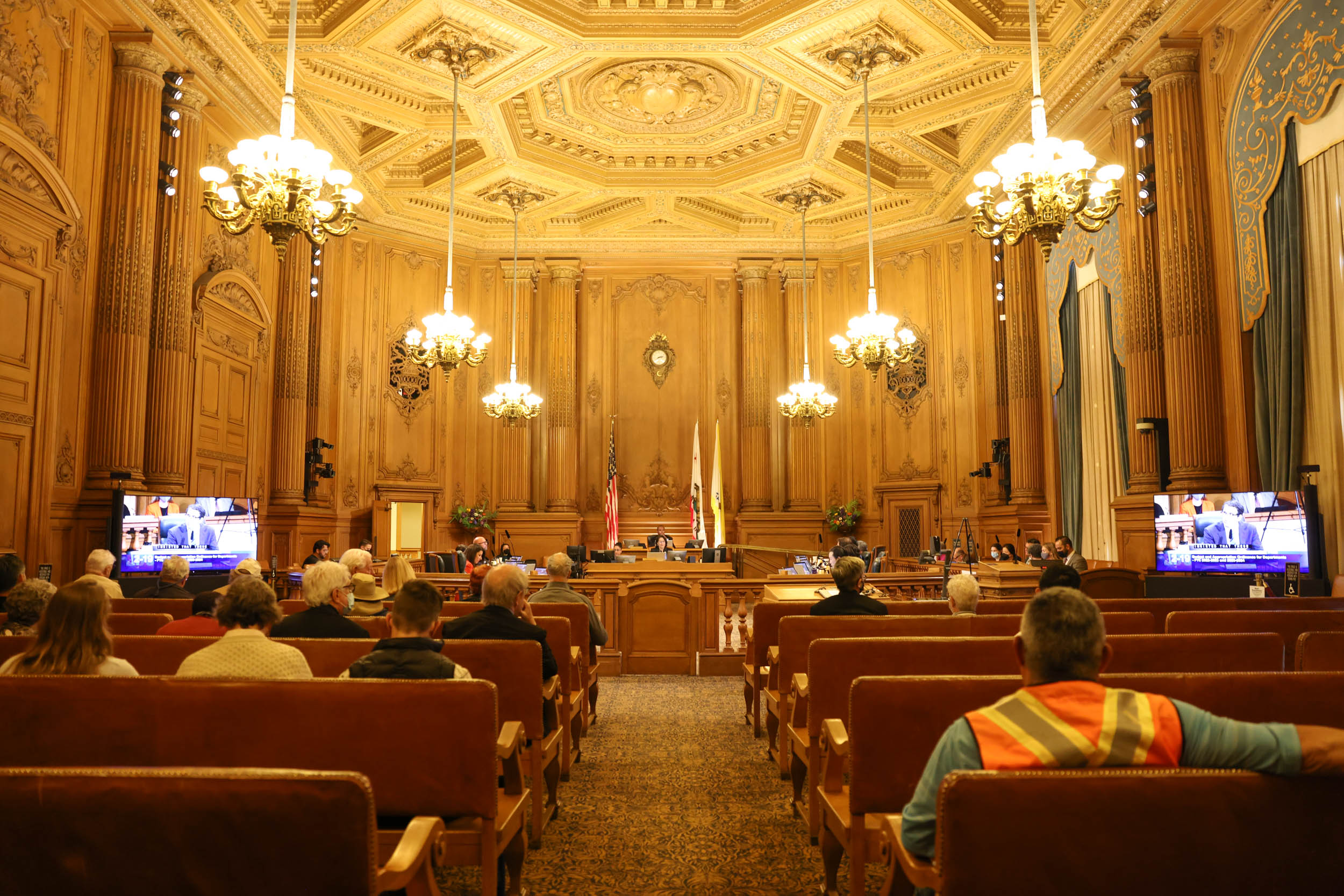Taking San Francisco’s empty office space and turning it into desperately needed units of housing has always seemed like a magic “double play” policy that could nip two of the city’s nagging problems in the bud.
But experts testifying at a Board of Supervisors committee Monday warned that unless the city takes considerable costs and complexity into consideration, the idea is just magical thinking—and would not produce housing that is truly affordable.
The hearing was called by Supervisors Ahsha Safai and Catherine Stefani with the goal, according to Safai, of taking “a lot of disparate efforts happening” and turning them into a “single cohesive strategy.”
Members of the Land Use Committee heard testimony from the board’s Budget and Legislative Analyst, along with industry representatives led by the San Francisco Planning and Urban Research Organization (SPUR), on the overall feasibility of office conversion and what would be necessary to make it possible.
They also heard from staff from the Office of Economic and Workforce Development (OEWD), who showcased new legislation from Mayor London Breed and Board President Aaron Peskin aimed at making “adaptive reuse” a reality.
The consensus was that any strategy toward converting surplus office space into badly needed “missing middle” housing will need a lot of moving parts to achieve a level of success that, while possible, may not be particularly profitable for developers or property owners.
“Conversion is costly, conversion is complex, it’s not an easy thing,” said Fred Brousseau, director of policy analysis at the Budget and Legislative Analyst (BLA). “ We have lots of empty offices, we have a need for housing, but there isn’t a one-for-one relationship.”
The BLA report concluded that it would take multiple reforms to streamline permitting, along with financial incentives, to get the job done, citing programs in New York City and Los Angeles that each produced around 12,000 new homes over decades.
Based on that experience, the report recommends new charter amendments to allow for by-right conversion (which would exempt builders from special reviews); however, that change would require approval by voters. The report also recommended a number of tax incentives and subsidies to help fund conversions.
4,200 Homes, but at What Cost?
Meanwhile, the group led by SPUR — which included representatives from the Urban Land Institute and other industry representatives — offered their estimate of how many buildings could be practically converted and how many new homes could be produced.
Studying 25 properties in the Financial District core just north and south of Market Street, the industry group found that 10 of them, or 40%, would be good candidates for conversion.
That’s significantly better than the outlook in other major cities, and could produce almost 4,200 homes, according to the industry group presentation.
There are several catches, however. In addition to the bureaucratic obstacles, such projects aren’t financially feasible without the right incentives— incentives that could make up for the higher long-term value of office space over housing, and the sheer costs of conversion, ranging from $472,000 to $633,000 per unit of housing.
“None of this pencils out unless you are able to reduce the construction costs,” SPUR San Francisco Director Sujata Srivastata told the committee.
‘This is not going to change our situation Downtown overnight’
Committee member Dean Preston expressed frustration that none of the policy options allowed for low-income housing, and went further to imply that they run the risk of being implemented at the expense of more affordable housing.
“As with every other housing question in San Francisco, it’s about housing for who,” Preston said. “And if this entire exercise is to create really high-end housing and at the same time incentivizing that by gutting our affordable housing requirements, I think part of this discussion needs to [include] what would it take to convert as much as possible of this to affordable housing.”
This was followed by the OEWD presentation that showcased the Breed/Peskin legislation.
The bill would ease specific zoning requirements to allow for conversion, such as removing requirements for rear yards, and parking. The relaxed rules would apply in the northeast corner of the city and expire at the end of 2028. The board is likely to consider the ordinance, which will be introduced Tuesday, this summer.
Peskin closed out the hearing with some caveats.
“This is not going to change our situation Downtown overnight,” he said. “This is not going to produce 10,000 units of housing by 2027. Jus’ Sayin’.”
